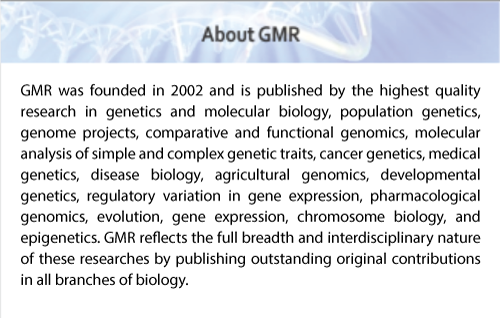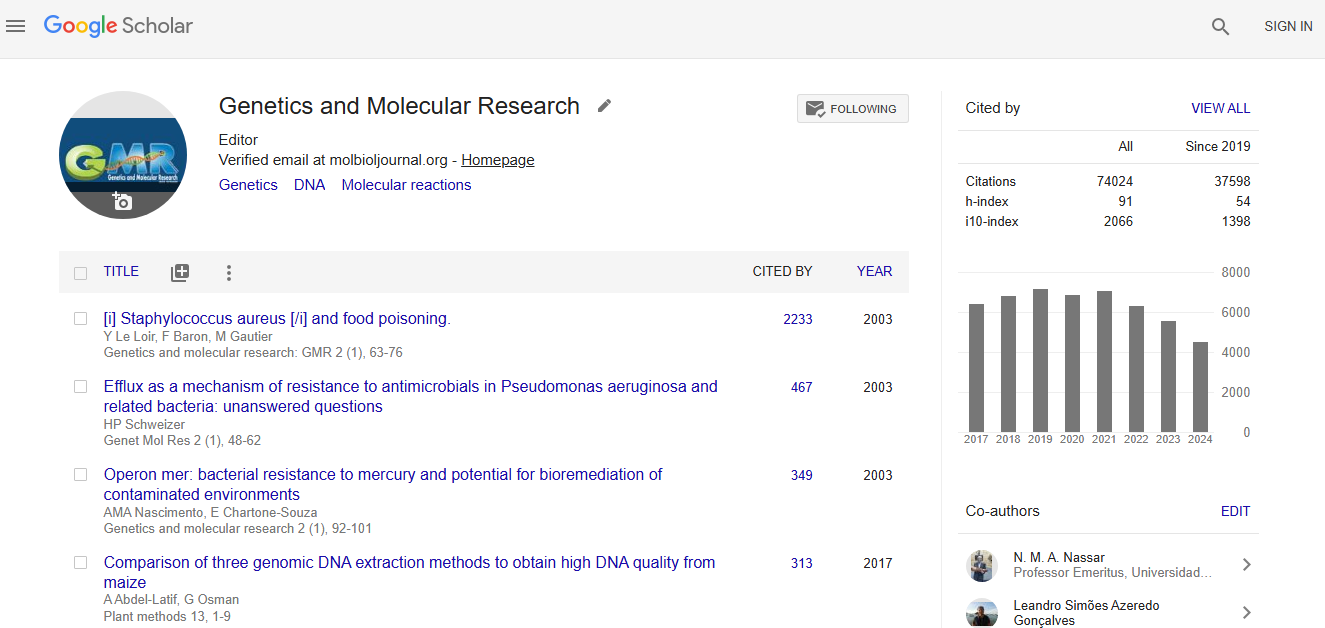Abstract
Genetic relationships among five varieties of Curcuma alismatifolia (Zingiberaceae) based on ISSR markers
Author(s): S. Taheri T.L. Abdullah N.A.P. Abdullah Z. AhmadThe genus Curcuma is a member of the ginger family (Zingiberaceae) that has recently become popular for use as flowering pot plants, both indoors and as patio and landscape plants. We used PCR-based molecular markers (ISSRs) to assess genetic variation and relationships between five varieties of curcuma (Curcuma alismatifolia) cultivated in Malaysia. Sixteen ISSR primers generated 139 amplified fragments, of which 77% had high polymorphism among these varieties. These markers were used to estimate genetic similarity among the varieties using Jaccard��?s similarity coefficient. The similarity matrix was used to construct a dendrogram, and a principal component plot was developed to examine genetic relationships among varieties. Similarity coefficient values ranged from 0.40 to 0.58 (with a mean of 0.5) among the five varieties. The mean value of number of observed alleles, number of effective alleles, mean Nei��?s gene diversity, and Shannon��?s information index were 8.69, 1.48, 0.29, and 0.43, respectively. The genus Curcuma is a member of the ginger family (Zingiberaceae) that has recently become popular for use as flowering pot plants, both indoors and as patio and landscape plants. We used PCR-based molecular markers (ISSRs) to assess genetic variation and relationships between five varieties of curcuma (Curcuma alismatifolia) cultivated in Malaysia. Sixteen ISSR primers generated 139 amplified fragments, of which 77% had high polymorphism among these varieties. These markers were used to estimate genetic similarity among the varieties using Jaccard��?s similarity coefficient. The similarity matrix was used to construct a dendrogram, and a principal component plot was developed to examine genetic relationships among varieties. Similarity coefficient values ranged from 0.40 to 0.58 (with a mean of 0.5) among the five varieties. The mean value of number of observed alleles, number of effective alleles, mean Nei��?s gene diversity, and Shannon��?s information index were 8.69, 1.48, 0.29, and 0.43, respectively.
Impact Factor an Index

Google scholar citation report
Citations : 74024
Genetics and Molecular Research received 74024 citations as per google scholar report
